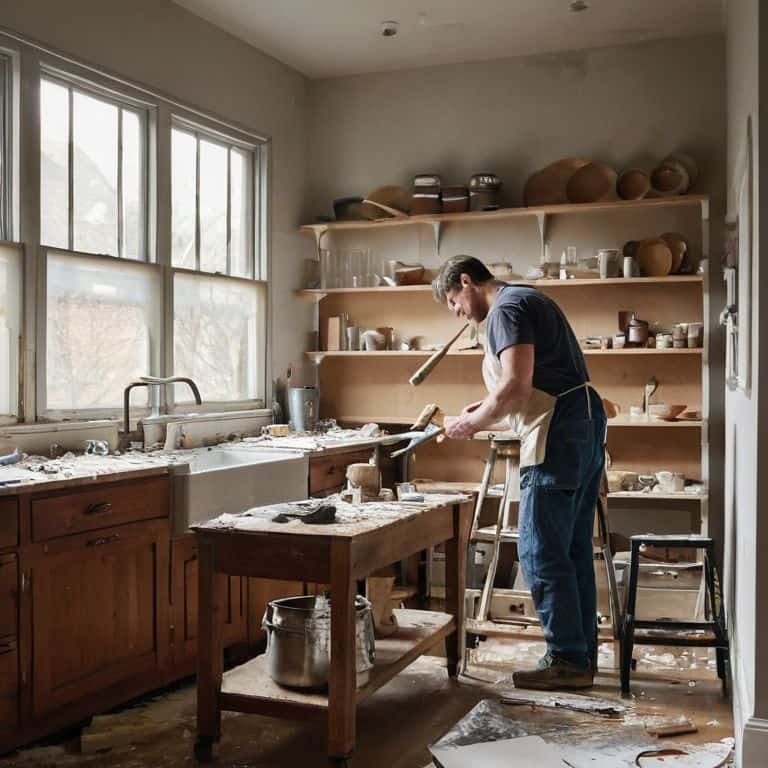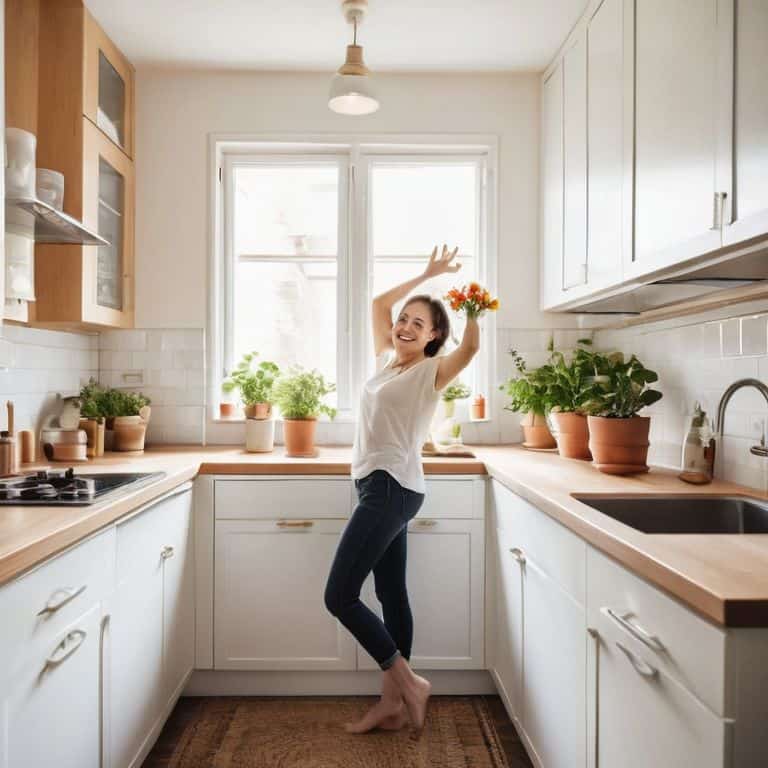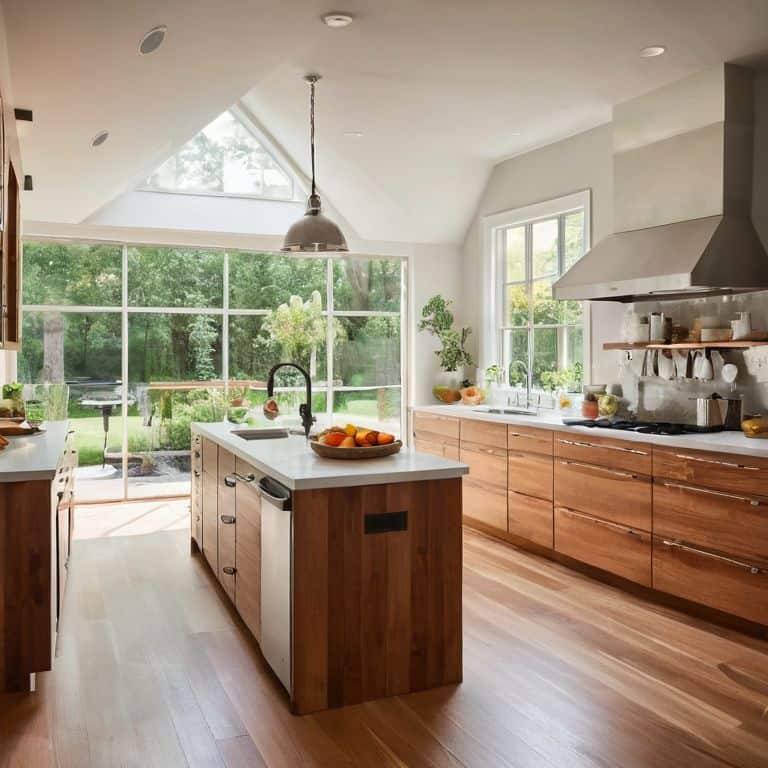As I stand in my own kitchen, surrounded by the warm glow of perfect kitchen lighting and the soft hum of my favorite ceramic pieces, I’m reminded of the countless times I’ve heard people say that a beautiful kitchen is just a luxury, not a necessity. But I’m here to tell you that’s just not true. A well-designed kitchen is the heart of any home, and having a guide to kitchen design that actually works for you can be a total game-changer. I’ve spent years helping clients create their dream kitchens, and I’ve learned that it’s not just about aesthetics – it’s about functionality, workflow, and making the most of the space you have.
In this article, I’ll be sharing my top tips and tricks for creating a kitchen that’s both beautiful and functional, no matter what your budget or style may be. From the importance of the kitchen work triangle to my favorite hacks for maximizing storage and minimizing clutter, I’ll be diving into the nitty-gritty details of what makes a kitchen truly great. Whether you’re a seasoned chef or a culinary newbie, my goal is to provide you with a practical and inspiring guide to kitchen design that will help you create a space that feels like home. So, let’s get started on this journey to creating your dream kitchen, and make the most of your space with a well-thought-out a guide to kitchen design!
Table of Contents
Guide Overview: What You'll Need

Total Time: 5 hours 30 minutes
Estimated Cost: $500 – $2000
Difficulty Level: Intermediate
Tools Required
- Tape Measure for measuring rooms and furniture
- Level to ensure proper alignment
- Pencil and Paper for sketching design ideas
- Computer with Design Software for creating a digital design plan
Supplies & Materials
- Graph Paper for sketching room layouts
- Cabinet Hardware to match your design style
- Flooring Samples to test different materials
- Paint Swatches to select a color scheme
Step-by-Step Instructions
- 1. First, let’s start by assessing your current kitchen layout and identifying areas that need improvement. Take a walk-through of your kitchen and notice the traffic flow, the condition of your cabinets, and the overall lighting. Consider how you use your kitchen on a daily basis and what features are essential to you. Think about your cooking style and the types of meals you typically prepare – this will help you determine the most effective layout for your space.
- 2. Next, it’s time to declutter and purge your kitchen. Get rid of any unnecessary items that are taking up valuable space, and consider implementing a “one in, one out” policy to prevent clutter from building up again. Sort items into categories, such as baking supplies, cooking utensils, and dinnerware, and think about how you can store each group in a way that makes sense for your workflow. This will help you create a more _streamlined_ and efficient kitchen.
- 3. Now, let’s talk about the kitchen work triangle, which is a fundamental principle of kitchen design. The work triangle refers to the path between the sink, stove, and refrigerator – the three areas where you spend most of your time when cooking. Aim to create a triangle with each point being between 4 and 9 feet apart, and avoid placing any obstacles, such as an island, in the middle of the triangle. This will help you create a more _functional_ and efficient workspace.
- 4. When it comes to storage, it’s all about creating a zone-based system. Divide your kitchen into different zones, such as a cooking zone, a cleaning zone, and a food storage zone, and assign specific storage areas to each zone. For example, you might store all your cooking utensils and spices near the stove, and your cleaning supplies near the sink. This will help you create a more _organized_ and efficient kitchen.
- 5. Lighting is another crucial element of kitchen design, and it’s essential to get it just right. Consider using a combination of overhead lighting, task lighting, and ambient lighting to create a warm and inviting atmosphere. Under-cabinet lighting can be particularly effective for illuminating countertops and creating a sense of depth in the kitchen. Think about the types of lighting fixtures that will work best for your space, and don’t be afraid to _experiment_ with different options.
- 6. Once you have a sense of your overall design plan, it’s time to start thinking about the nitty-gritty details, such as the type of countertops, flooring, and cabinets you want to use. Consider factors such as durability, maintenance, and aesthetics, and think about how each element will contribute to the overall look and feel of your kitchen. Don’t forget to consider the _sustainability_ of your materials, and opt for eco-friendly choices whenever possible.
- 7. Finally, it’s time to bring your design plan to life and start implementing your vision. Whether you’re working with a contractor or taking on the project yourself, make sure to create a detailed timeline and budget, and don’t be afraid to _seek advice_ from professionals if you need it. Remember to stay focused on your goals and priorities, and don’t get too caught up in the _details_ – the end result will be worth it.
A Guide to Kitchen Design

As I always say, a well-designed kitchen is all about creating a harmony between form and function. When it comes to small kitchen layout ideas, it’s essential to consider the workflow and traffic patterns in your kitchen. I like to think of it as a little dance, where every step and movement is intentional and efficient. By applying the principles of the kitchen work triangle, you can create a space that feels both calm and energized.
To take your kitchen design to the next level, consider incorporating modern kitchen trends 2024, such as mixed materials and bold color schemes. A kitchen island design plan can also be a great way to add extra counter space and storage, while also creating a beautiful focal point in the room. Whether you’re looking to renovate your entire kitchen or just make a few tweaks, there are plenty of budget friendly kitchen remodeling options available.
One of my favorite ways to add ambiance to a kitchen is through kitchen lighting design tips. By layering different light sources, such as overhead lighting, task lighting, and ambient lighting, you can create a warm and inviting atmosphere that makes you want to cook and gather with loved ones. And, with the growing interest in sustainable kitchen materials, it’s easier than ever to create a space that’s not only beautiful, but also eco-friendly.
Budget Friendly Modern Trends
To achieve a modern look without breaking the bank, consider incorporating affordable materials and clever design hacks. For instance, opt for laminate countertops that mimic the appearance of expensive stone or wood. You can also update your kitchen’s lighting with stylish and affordable fixtures, such as pendant lights or under-cabinet LEDs. Additionally, shop for second-hand or discounted decorative items, like vintage ceramics or glassware, to add a touch of personality to your space.
By embracing these budget-friendly trends, you can create a beautiful and functional kitchen that reflects your personal style. Remember, it’s all about striking a balance between form and function, and with a little creativity, you can achieve a modern and inspiring kitchen without overspending.
Small Kitchen Layout Ideas for 2024
When it comes to small kitchen layout ideas, every inch counts. I always say that a well-designed small kitchen can be just as functional as a large one. For 2024, I’m loving the idea of a “galley-style” kitchen, where everything is within arm’s reach. This layout is perfect for narrow spaces and can be customized with clever storage solutions. Consider installing a pegboard for hanging utensils and pots, or opting for a compact island with built-in storage.
To make the most of your small kitchen, think vertically. Install shelves or a pot rack to keep frequently used items off the countertops, and don’t forget about the often-wasted space above your cabinets. With a little creativity, even the smallest kitchen can feel spacious and inviting.
Designing Your Dream Kitchen: 5 Essential Tips
- Start with the kitchen work triangle: the path between your sink, stove, and refrigerator should be clear and efficient to minimize walking distance and maximize workflow
- Invest in layered lighting: a combination of overhead lighting, task lighting, and ambient lighting can make your kitchen feel more spacious and inviting
- Choose materials and finishes that reflect your personal style: from sleek quartz countertops to rustic wooden floors, the right materials can elevate your kitchen’s aesthetic and durability
- Optimize your storage: a well-organized pantry, ample cabinetry, and clever drawer dividers can keep your kitchen clutter-free and make cooking a breeze
- Don’t forget the details: from a beautiful ceramic tile backsplash to a statement light fixture, it’s the small touches that can make your kitchen feel truly special and reflective of your personality
Key Takeaways for a Dream Kitchen
Embracing the ‘kitchen work triangle’ concept can significantly enhance your cooking experience by creating an efficient workflow between the sink, stove, and refrigerator
Investing in layered lighting – a combination of overhead, task, and ambient lighting – can elevate both the functionality and ambiance of your kitchen, making it a joy to cook and dine in
Regardless of your kitchen’s size or your budget, focusing on thoughtful storage solutions, a well-organized pantry, and a few statement pieces, such as unique ceramics or glassware, can transform your space into a haven that inspires culinary creativity
Designing Your Dream Kitchen
A well-designed kitchen is not just about aesthetics; it’s about crafting a space that nurtures the soul, sparks creativity, and brings people together – and that’s a recipe for a happier, healthier home.
Clara Wu
Bringing Your Dream Kitchen to Life

As we conclude this guide to kitchen design, let’s recap the essentials: understanding your kitchen work triangle, choosing the right layout for your space, and incorporating budget-friendly modern trends. Remember, a well-designed kitchen is all about balance and harmony, where form and function come together to create a space that inspires you to cook from the heart. By applying these principles, you’ll be well on your way to creating a kitchen that’s not only beautiful but also highly functional.
Now that you’re equipped with the knowledge to transform your kitchen, I want to leave you with a final thought: your kitchen, your way. Don’t be afraid to experiment, try new things, and make your space truly reflect your personality and cooking style. With a little creativity and planning, you can turn your kitchen into a warm and inviting hub that brings people together and fosters a sense of community – and that’s the greatest recipe of all.
Frequently Asked Questions
What are the most essential elements to consider when designing a kitchen for optimal workflow and functionality?
For me, it’s all about the kitchen work triangle: sink, stove, and fridge. These three elements should be positioned to minimize walking distance and maximize efficiency. I also consider the ‘landing strip’ near the fridge for easy unloading, and a dedicated cooking zone with ample counter space and good lighting.
How can I effectively incorporate task lighting into my kitchen design to improve visibility and ambiance?
To elevate your kitchen’s functionality and ambiance, I swear by strategic task lighting. Under-cabinet LED strips, pendant lights above islands, and in-drawer lighting can make all the difference, providing focused illumination exactly where you need it. Trust me, it’s a game-changer for cooking and food prep!
What are some creative ways to maximize storage in a small kitchen without sacrificing style or aesthetic appeal?
To maximize storage in a small kitchen, I swear by installing pegboards, hanging pot racks, and using verticle carousels. These clever solutions keep essentials within reach while maintaining a stylish aesthetic. Plus, they’re budget-friendly and easy to implement, making them perfect for any small kitchen makeover.
